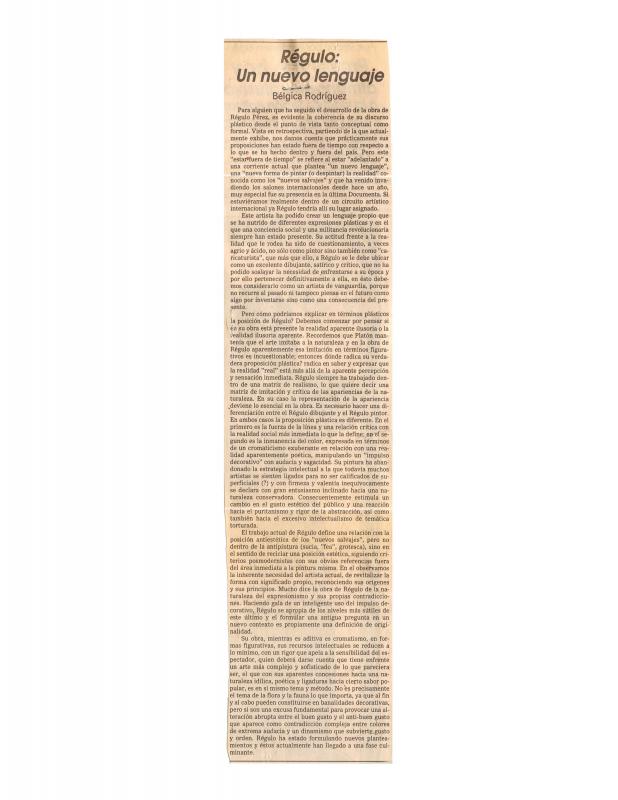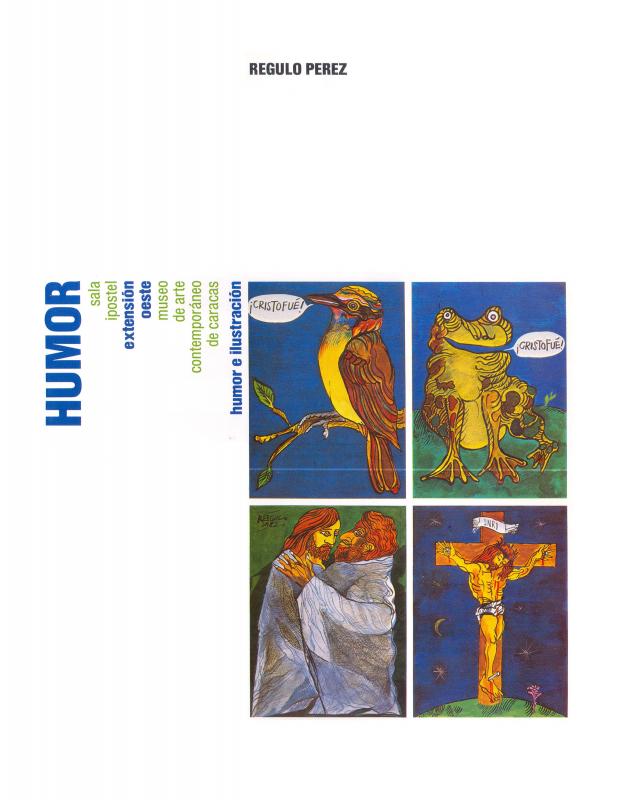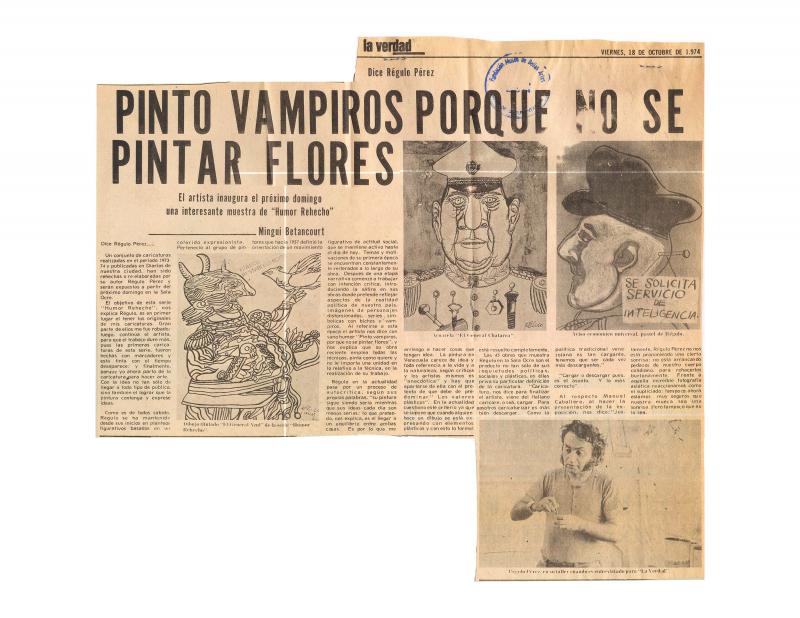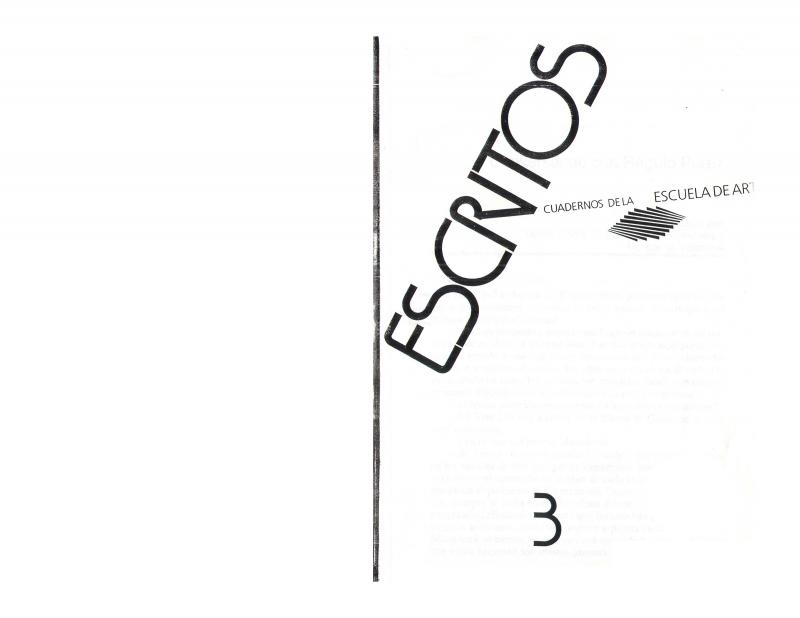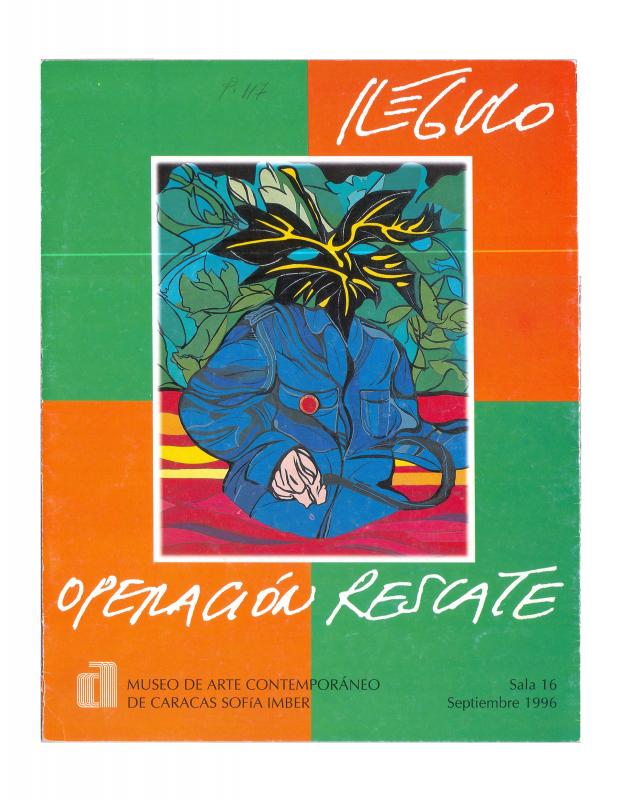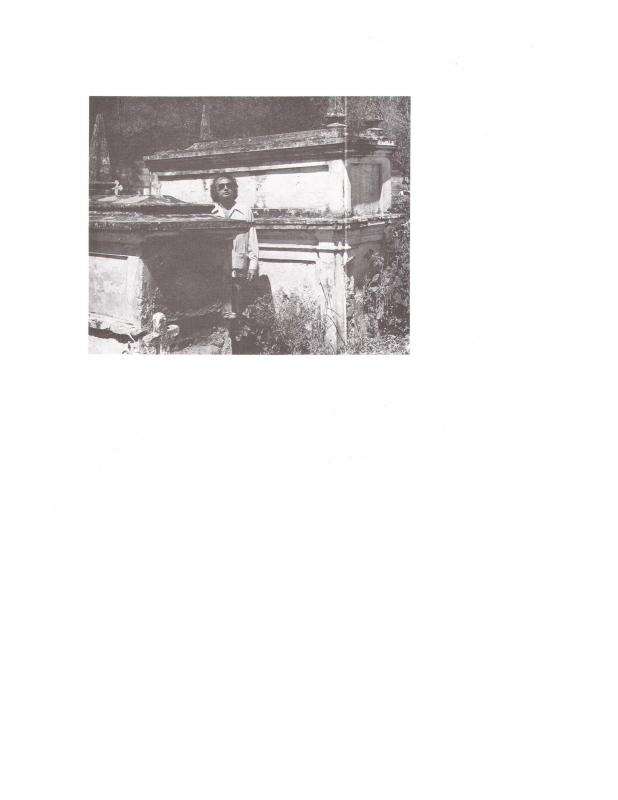In this text, Venezuelan artist Régulo Pérez (b. 1929) describes his work as the illustrator of “Entrevistas imaginarias” a section of the Venezuelan newspaper Últimas Noticias featuring imaginary interviews. That column in a newspaper with nationwide circulation was published on the occasion of the exhibition of the same name held at the Galería de Arte Merenap de Mérida (state of Mérida) in 1981.
The historical work Régulo Pérez did for the newspaper proved to be, in his own words, fundamental to his understanding of the artistic process insofar as, on the one hand, he had to put his creativity at the service of the workplace and, on the other, find a way to express his personal style and to enrich his work in general. By illustrating imaginary interviews by “important personalities from Venezuela”, to figures from all historical moments, he had the chance to “depict the character and personality” of individuals who changed the course of history (Sigmund Freud, John F. Kennedy, Ché Guevara, and many others)—an exercise that proved extremely enriching.
Régulo defends the historical and documentary importance of illustration and caricature. He describes both the process prior to making the illustrations in relation to certain intellectual and formal concerns and the context in which the illustrations circulate.
On Régulo’s work, see Rafael Pineda’s texts “Régulo y el eje Orinoco – Pintura” (ICAA digital archive doc. no. 1154220) and “Naturaleza y cultura” (doc. no. 1154268), featured in the catalogue Régulo en Acquavella, Caracas, 1981; Bélgica Rodríguez’s “Un nuevo lenguaje” (doc. no. 1157776); Roberto Guevara’s “Régulo y la cultura visual” (doc. no. 1157759); Jesús Sanoja Hernández’s analysis “Prólogo serio para el más serio de nuestros humoristas” (doc. no. 1154188); Mingui Betancourt’s “Pinto vampiros porque no sé pintar flores” (doc. no. 1157808); the interview “Conversando con Régulo Pérez: Entrevistado por Berna Parra, María Eugenia Sánchez y Margarita Villarroel” (doc. no. 1154236); Ivette Villarreal’s partial chronology of the artist’s life entitled “La salvación por la imagen” (doc. no. 1154300); Oswaldo Barreto’s analysis “Régulo Pérez : La ciudad se revierte” (doc. no. 1154172); and the reproduction of the letter the artist wrote to reject the First Prize in Painting granted at the Exposición Nacional de Artes Plásticas in 1972 (doc. no. 1157824).



